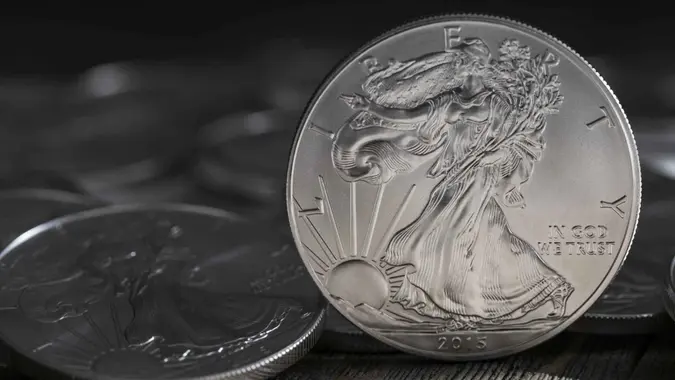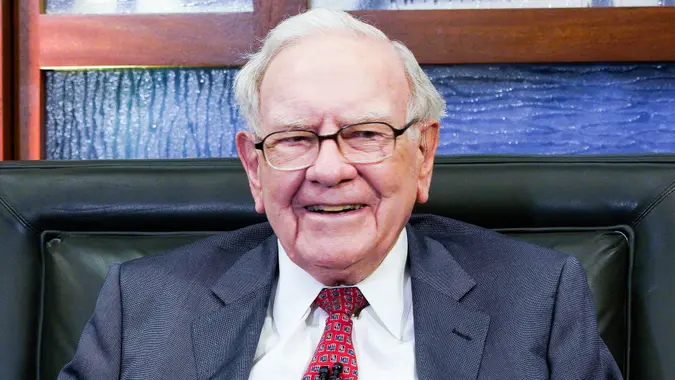What Makes the Top 1% Different From the Upper-Middle Class?

Commitment to Our Readers
GOBankingRates' editorial team is committed to bringing you unbiased reviews and information. We use data-driven methodologies to evaluate financial products and services - our reviews and ratings are not influenced by advertisers. You can read more about our editorial guidelines and our products and services review methodology.

20 Years
Helping You Live Richer

Reviewed
by Experts

Trusted by
Millions of Readers
Ever wonder what really separates the ultra-wealthy from the well-off? Like, is it just private jets and secret Swiss bank accounts — or is there something deeper going on?
According to IRS data from SmartAsset, the U.S. threshold for joining the top 1% stands at $787,712 in 2024.The top 1% might live in the same cities, send their kids to the same schools and shop at the same Whole Foods as the upper-middle class but behind the scenes, the differences run much deeper than you’d think.
When it comes down to it, what really distinguishes the one-percenters from the upper-middle class aside from their sheer net worth?
According to Dennis Shirshikov, professor of finance at City University of New York and head of growth and Engineering at GrowthLimit, these include scalable assets, business equity and real estate portfolios.
“Private funds are owned by the 1%, while consumable assets, primary residence, retirement accounts –are predominantly owned by the upper-middle class,” Shirshikov explained. “Ownership that spits off cash and appreciates, is the flywheel.”
Let’s take a look at what else actually sets them apart.
The Hidden Privilege of Access
What truly separates the 1% is not just higher earnings but deeper access to financial strategies and exclusive markets.
“They get private briefings, pre-IPO deals and tailored tax shelters that multiply wealth faster than standard investment options,” said Angelo Crocco, certified public accountant (CPA), chartered global management accountant (CGMA) and owner of AC Accounting.
Even their borrowing is cheaper, he explained. They leverage credit at institutional rates while the upper-middle class pays retail rates. This compounding advantage creates a gap that widens every year.
And it’s not just about money — it’s about who they know and what rooms they’re allowed into. From private wealth managers to elite legal advisors, the 1% operate within a rarefied ecosystem designed to preserve and grow their capital.
It’s a whole different financial language. They’re not just playing a different game — they’re playing with different rules.
Behavior Beyond Income
From what he’s seen, Crocco said upper-middle-class households tend to focus on budgeting, cautious investing and steady retirement planning.
“The 1% push for asymmetric bets, taking calculated risks with high potential returns,” he added.
For example, they hire teams to manage not just investments but legacy planning. While an upper-middle-class family may own a home and a stock portfolio, the 1% own businesses, commercial real estate and influence.
“Their wealth is always in motion. And this constant reinvestment mentality is why their fortunes grow even while they sleep,” according to Crocco.
This difference in mindset shapes everything. Where the upper-middle class is often focused on stability and security, the 1% think in terms of scale and leverage.
In other words: they’re not afraid to deploy capital aggressively. To them, money is a tool, not a trophy. Instead of waiting for compound interest to do its thing over decades, they engineer opportunities to multiply wealth in compressed timeframes.
It’s not just about having more — it’s about thinking differently about what’s possible.
More From GOBankingRates
- Nearly 1 in 3 Americans Hit by a Costly Holiday Scam, Norton Survey Shows -- How To Avoid This
- Here's What the Average Social Security Payment Will Be in Winter 2025
- How Middle-Class Earners Are Quietly Becoming Millionaires -- and How You Can, Too
- The Easiest Way to Score $250 for Things You Already Do
 Written by
Written by  Edited by
Edited by 


























